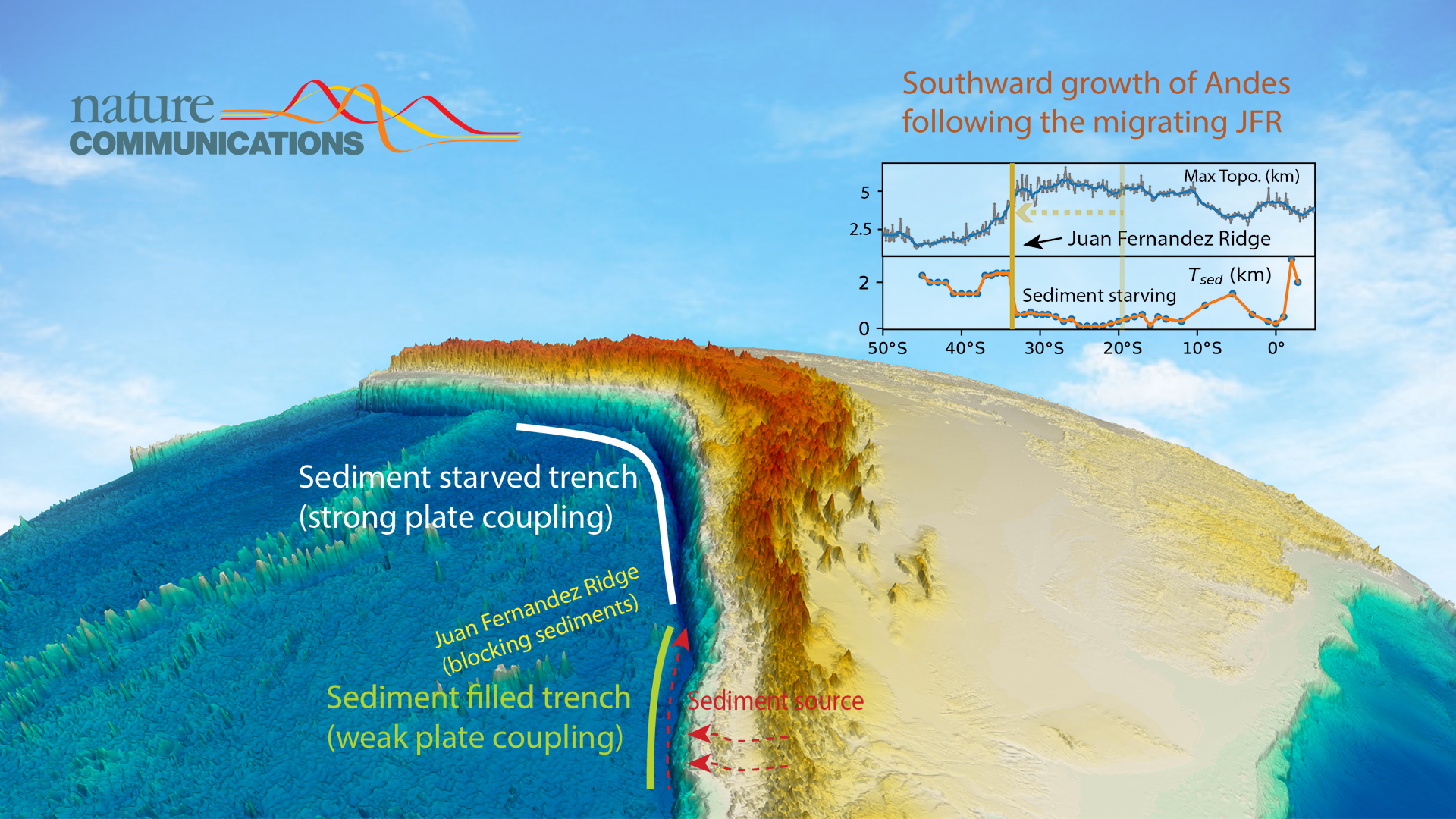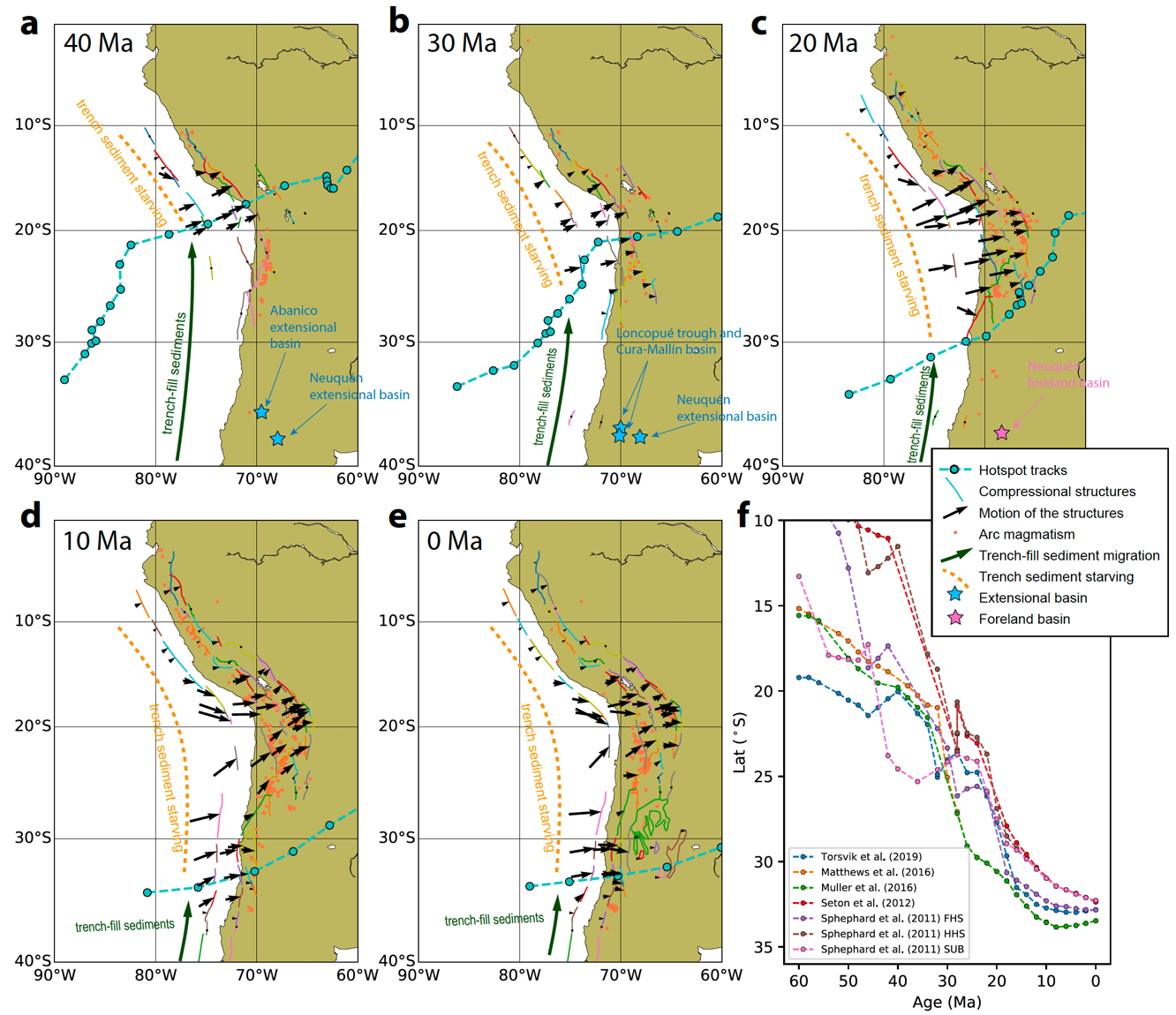Climatic and tectonic factors driving uplift of Andes
Jiashun HU 2021-12-21
The Andes is one of the most prominent topographical features on Earth’s surface. The mechanisms that control its formation have puzzled geologists for decades. Earlier studies attribute the Andean orogeny to tectonic factors that usually have a large time-space scale similar to Andean orogeny. Yet, most of them failed in explaining the two abnormal features – its concave geometry along the coastline and the southward growth of the Andes, implying that cross-scale processes could have played an important role.
Assistant Professor Jiashun Hu from the Department of Earth and Space Sciences at the Southern University of Science and Technology (SUSTech) and his co-authors have reported their latest work discussing the effect of sediment subduction on Andean orogeny. Their work, entitled “Southward expanding plate coupling due to variation in sediment subduction as a cause of Andean growth,” has been published in the high-impact academic journal Nature Communications.
 Figure 1. The inverse correlation between the height of the Andes and the thickness of trench-fill sediments. Due to the prevailing westerlies that carry the moisture from the Pacific and the mountain glaciers that enhance surface erosion, the southern Andes is the main source of sediments that are eventually transported to the trench.
Figure 1. The inverse correlation between the height of the Andes and the thickness of trench-fill sediments. Due to the prevailing westerlies that carry the moisture from the Pacific and the mountain glaciers that enhance surface erosion, the southern Andes is the main source of sediments that are eventually transported to the trench.
Uplift of the Andes started in Eocene in its mid-to-northern segment, then propagated towards the south in the following tens of millions of years. Significant crustal shortening has occurred in the middle segment contrary to the mild shortening observed in the northern and southern segments, causing the enigmatic bend along the coastline, the Arica Bend. Prof. Hu and his co-authors have shown that their model could explain both features by reconstructing the associated geological features and testing with numerical models.
 Figure 2. (a-e) the reconstructed kinematic history of the Juan Fernandez Ridge and the compressional structures of the Andes. (f) the reconstructed position of the intersection between JFR and the coastline through time.
Figure 2. (a-e) the reconstructed kinematic history of the Juan Fernandez Ridge and the compressional structures of the Andes. (f) the reconstructed position of the intersection between JFR and the coastline through time.
Built upon the idea that sediments can lubricate plate interface and could therefore decouple the two plates and cause reduced shortening in the upper plate (Lamb and Davis, 2003, Nature), the researchers took one step further by uncovering the effect of an east-west trending hotspot track known as the Juan Fernandez Ridge (JFR) on the distribution of trench-fill sediments.
Firstly, they suggest that sediment influx from the land is mainly controlled by climate, which leads to a sediment-starved trench in the middle segment of the Andes and a sediment-filled trench in the north and south (Fig. 1). Secondly, the topographical relief of the JFR has blocked the northward-flowing sediments, keeping the middle segment sediment-starved, and therefore causing a stronger crustal shortening (based on the assumption) (Fig. 1). Lastly, the southward migration of the JFR has resulted in the expansion of the sediment-starved trench in the middle segment, causing the southward growth of the Andes (Fig. 2). This is further supported by numerical tests, which show a large magnitude of shortening in the middle segment that tapers out towards north and south.
This model highlights the convoluted interaction between climate and tectonics, and how deeply involved they are with each other. Sediments, as a consequence of such interaction, can sometimes become a cause. The idea that tiny sediments may contribute to the uplift of the gigantic Andes suggests cross-scale interaction in geology is not peculiar at all.
Assistant Professor Jiashun Hu from SUSTech is the first and corresponding author of this paper. Professor Lijun Liu from the University of Illinois Urbana-Champaign and Professor Michael Gurnis from California Institute of Technology (Caltech) are the co-authors.
This work is supported by the National Science Foundation of China (NSFC), the National Science Foundation of the United States (NSF), and the Center for Computational Science and Engineering (CCSE) at SUSTech.
Paper link: https://www.nature.com/articles/s41467-021-27518-8




